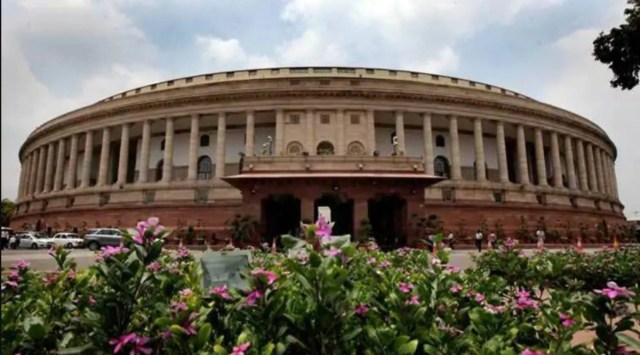
As strong advocates of more representation of women in politics, looking at the number of women elected in the Gujarat and Himachal Pradesh assemblies has been saddening. Gujarat elected just 8 per cent of women legislators in its 182-member assembly. Himachal Pradesh, where every second voter is a female, has elected 67 men and only one woman. The national average of women in all state assemblies remains around 8 per cent. The figure is grim. With just 14.9 per cent women elected to our Lok Sabha, India ranks 144 out of 193 countries in the representation of women in parliament according to Inter-Parliamentary Union’s latest report. Among our immediate neighbours, India falls behind Bangladesh, Pakistan, and Nepal. After the 73rd and 74th Constitutional Amendments, the representation of women in local governments increased from a mere 3-4 per cent to nearly 50 per cent now. To similarly increase the number of women in our state legislatures and Parliament, there is an immediate need for a law that mandates at least 33 per cent reservation for women. In the current Winter Session of Parliament, there is a renewed push from most Opposition parties to pass the Women’s Reservation Bill. Our deep passion for more women’s representation led us to trace the history of this monumental Bill and think about the road ahead.
The Women’s Reservation Bill was first introduced in 1996 by the Deve Gowda government. After the Bill failed to get approval in Lok Sabha, it was referred to a Joint Parliamentary Committee chaired by Geeta Mukherjee, which presented its report in December 1996. However, the Bill lapsed with the dissolution of the Lok Sabha and had to be reintroduced. PM Vajpayee’s NDA government reintroduced the Bill in the 12th Lok Sabha in 1998. Yet again, it failed to get support and lapsed. In 1999, the NDA government reintroduced it in the 13th Lok Sabha. Subsequently, the Bill was introduced twice in Parliament in 2003. In 2004, the UPA government included it in the Common Minimum Programme that said: “The UPA government will take the lead to introduce legislation for one-third reservations for women in Vidhan Sabhas and in the Lok Sabha.”
In 2008, the government tabled the Bill in the Rajya Sabha so that it does not lapse again. The Parliamentary Standing Committee on Law and Justice recommended the passage of the Bill in December 2009. It was cleared by the Union Cabinet in February 2010. On March 9, 2010, the Bill was passed in the Rajya Sabha with 186-1 votes after immense debate. History was created. The Bill, then, reached the Lok Sabha where it never saw the light of day. When the House was dissolved in 2014, it lapsed. Now we are back to square one.
The case for women’s reservation emanates from their lack of representation in legislative bodies. We cannot rely on incremental changes. We cannot let another generation fight for what is fundamental to participating in a democracy – the right to be heard and make decisions. Women’s reservation will jump-start the democratic process. It will allow a significant majority to have a say in how their lives must be governed. With its massive women population, India has a huge reservoir of potential which, if unleashed, will take the country much ahead.
So far only two regional political parties in India – Odisha’s Biju Janata Dal (BJD) and West Bengal’s Trinamool Congress (TMC) have reserved seats for women for election candidatures. In the 2019 general elections, TMC and BJD fielded 40 per cent and 33 per cent women candidates respectively. Interestingly, 65 per cent of the TMC’s women candidates won (11/17) in comparison to 44 per cent of their men (11/25), whereas 86 per cent of the BJD’s women candidates won (6/7) in comparison to 43 per cent of their men (6/14). This move by both parties, however, failed to motivate the national parties. Evidently, lack of political ability is not the reason women are not elected to public office at the same rates as men. Over the years, though, women’s vote share has increased significantly, but the number of women in positions of power has not.
What we must also account for is representation across caste groups. Any scheme of women’s reservation must be within the constitutional tenets. We propose that the women’s reservation must have a quota within to allow fair representation of women from Scheduled Castes and Scheduled Tribes.
Women have historically suffered due to systemic inequality and barriers. Without a gender quota, women’s representation will continue to remain marginal causing a massive deficit in our democracy. Understanding this reality, we are introducing a Private Member’s Bill demanding women’s reservation in all legislative bodies — Lower and Upper Houses, and also reserved seats within that for women who come from historically marginalised communities. It is a single step that will, if passed, immediately ensure at least 33 per cent representation of women.
Victor Hugo famously said, “No force on earth can stop an idea whose time has come”. Women’s reservation in legislatures is one idea which has been discussed, debated, and agreed upon by most political parties. It is now time to take it to fruition. Let’s give the women of this country their due, finally.
Angellica Aribam is the founder of Femme First Foundation and Sasmit Patra is a Rajya Sabha member from the Biju Janata Dal and advisory board member of Femme First Foundation